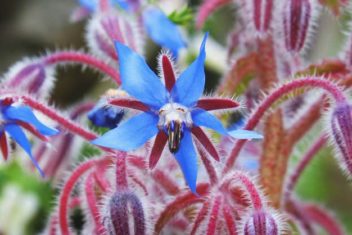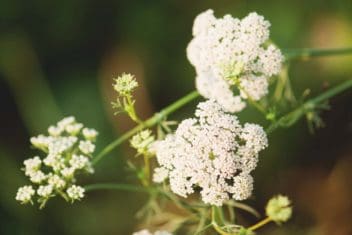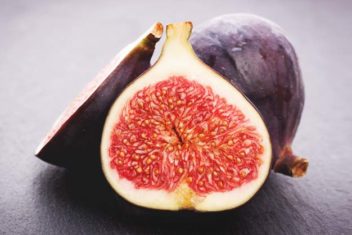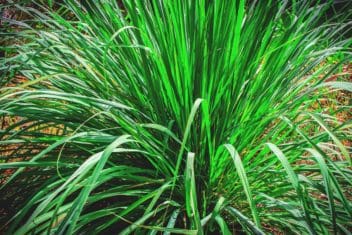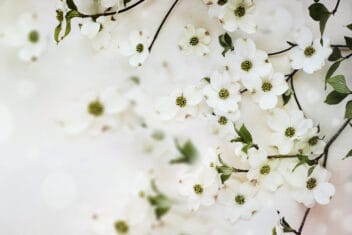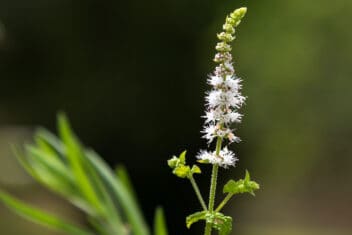Never heard of sea buckthorn? Most people haven’t! But if you want to try growing a fruit that’s a little out of the ordinary and incredibly tasty, sea buckthorns should be at the top of your list.
These plants help with soil and wildlife conservation while producing citrusy, sweet, tart fruits, often called seaberries. You can use seaberries in pies and jams and to make wine and liquor.
Permaculture gardeners plant sea berries because they’re a hardy, nitrogen-fixing perennial.
Let’s look at everything there is to growing sea buckthorns.
Best Varieties Sea Buckthorn
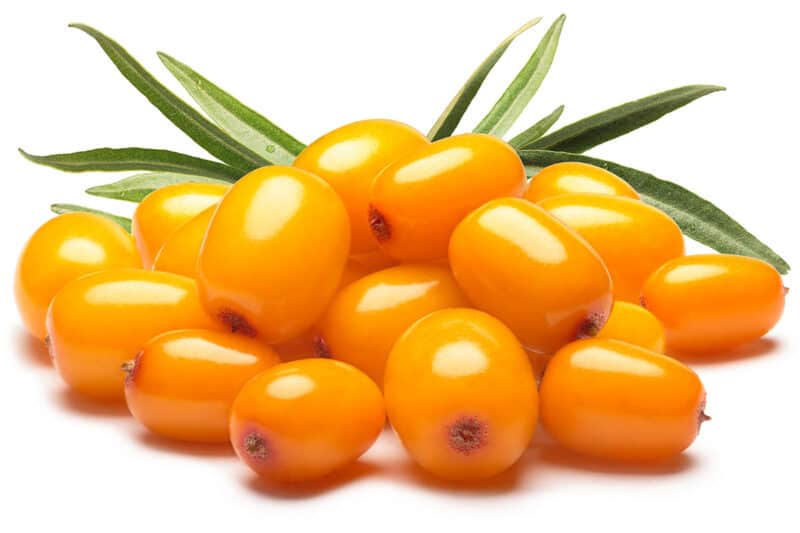
Sea buckthorns (Hippophae rhamnoides) belong to the Elaeagnaceae family, which includes oleasters and silver berries.
There are many species, but most have similar characteristics, and they are often sold under the same name. They’re hardy to USDA Zone 3, capable of handling drought conditions, and tolerant saline soil.
All varieties are easy to grow and rarely face pest or disease problems.
Seaberry plants are dioecious, which means they are either male or female. Female plants bear fruit, and one male plant is needed for every six female plants to ensure proper pollination.
Here are a few of the sea bucktorn varieties you might want to try growing.
Russian Orange – This variety has fewer thorns and yields large, top-quality fruits that everyone will love.
Sirola – Here is a strong, vigorously growing variety with fewer thorns than some others. The berries are sweet and enjoyable.
Hergo – This is a tough, hardy variety with high harvest potential thanks to its upright growth habit.
Planting Sea Buckthorns
Once you decide which of these hardy plants you want to grow, here is what you need to know about growing sea buckthorn on your property.
Pick a Sunny Spot
Sea buckthorn plants prefer a sunny location for optimal growth. If planted in a shady location, the yield will be significantly smaller. These plants form a hedge or barrier, perfect for dividing property lines.
Seaberries spread aggressively with root-shoots if there is bare soil. They also spread through grass, but not as vigorously. Make sure you don’t plant them near foundations or driveways because they can damage cement.
Prepare the Space
Seaberry plants are nitrogen-fixing, and they can grow on marginal soils that other plants might not survive in. While they tolerate a range of soil conditions, they prefer soil with good drainage. Sea buckthorns won’t grow well in soggy conditions.
Try to keep the pH range between 5.5 and 7.5 for best growth.
If you want the plants to fruit, plant at least one male and one female plant. Pollination happens via wind, so the plants need to be spaced three to six feet apart at a maximum.
Gardeners grow sea buckthorn plants by seed or propagating. Let’s look at each method.
Propagating Sea Buckthorn Plants
Propagating from a cutting helps ensure the sex of the plant and that you have the needed numbers of male plants to female plants.
If you have access to a seaberry plant, take a six-inch cutting from last year’s growth while the plant is dormant, typically in the late fall to early spring.
Soak the cutting in water about 2/3 inch up the length, changing the water daily. Roots form within a week, and once they do, plant the cuttings in a pot. Keep inside for two months until fully rooted and ready to be transplanted outside.
Plant from Seeds
While this method takes longer, it’s ideal if you don’t have a source for cuttings. You have two options when growing sea buckthorns from seeds.
- Scarify the seeds with medium-grit sandpaper and sow outdoors in the fall or early spring.
- Scarify the seeds and put them in a moistened paper towel. Place the towel in a zip-top plastic bag in the refrigerator until they sprout, which takes 60-90 days. Then, sow indoors.
Caring for Sea Buckthorn
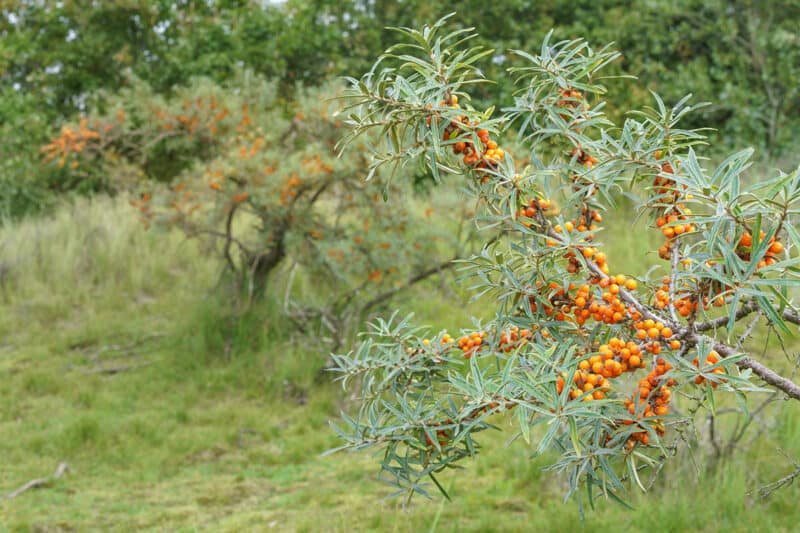
For the most part, these are plants that you stick in the garden and forget about. They don’t require an excessive amount of care, but there are some key things to encourage optimal growth.
Water Your Plants
Water seaberry plants regularly to stop the soil from drying out. It’s important not to over-water, so space the watering out every few days. Soggy roots result in diseases.
Fertilize Periodically
You don’t need to fertilize sea buckthorn plants regularly. Once or twice a year using a balanced organic mix should do.
Prune to Your Desired Shape and Size
These plants grow between six and 18 feet tall, and while pruning isn’t a requirement, gardeners find that they can be creative with the growth of seaberries.
Prune the plants into hedges, shrubs, or trees, or don’t prune at all. There’s no need beyond aesthetics to prune and force the plant into any particular shape.
Trim off unproductive, damaged, or dead branches to increase the overall health of the plant.
Apply New Mulch Each Year
Each year, put down a thick layer of organic mulch in the spring; compost or manure works best. Not only does this help to provide much-needed nutrients, but it also protects the shallow roots, retains moisture, and suppresses weed growth.
Companion Plants for Sea Buckthorns
Sea buckthorns are nitrogen-fixing plants, so it’s best to plant them near plants that respond well to extra nitrogen. Some nitrogen-loving plants include:
- Tomatoes
- Peppers
- Muskmelons
- Cucumbers
- Squash
- Okra
Common Pests & Diseases
One of the bonuses of growing sea buckthorns is that they face few pest and disease problems. There are only a few that might give you a headache.
Aphids
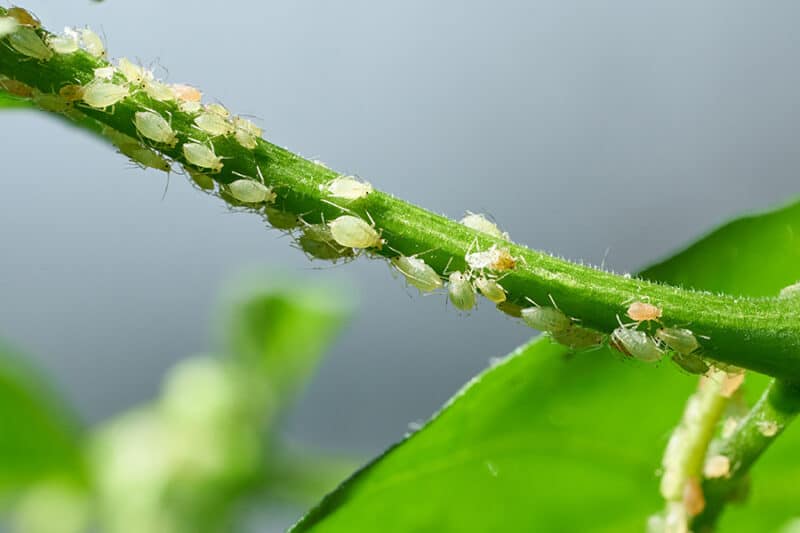
Aphids are a familiar pest for most gardeners.
These tiny insects come in a range of colors and like to suck out the sap from leaves, leaving behind a sticky substance called honeydew. Honeydew encourages the growth of sooty mold, which you want to avoid, as well as ant infestations.
For the most part, aphids rarely do significant damage unless there is a severe infestation. Knock the aphids off of the leaves with jets of water; make sure to check the underside of the leaves. Neem oil treats severe infestations.
Rose Leaf Roller
These pests are related to wasps, bees, and ants. The females release a toxic chemical while laying eggs in the leaf tissue. That’s what causes the leaves to curl at both margins. Then, the larvae hatch and start to eat inside of the curled leaf.
Small infestations rarely kill plants; pick the leaf rollers off by hand. Heavy infestations are harder to manage. Attracting natural predators is one method that seems to eliminate these pests.
Gypsy Moth
The gypsy moth is a major problem because the caterpillars have huge appetites. They can defoliate shrubs and trees, leaving them vulnerable to other diseases that can kill the plant.
You might find visible egg masses covered with tan or yellow hair or newly hatched, black caterpillars. The adult mothers are brown with a dark brown pattern on the wings. The females are larger and nearly white with dark patterns on their wings.
Try spraying Bt (Bacillus thuringiensis) on the plants to protect them from defoliation.
Verticillium Wilt
This disease starts with yellowing edges of the oldest leaves, often on just one side of the plant. Over time, all of the leaves will turn yellow and wilt.
Unfortunately, no effective treatment for verticillium wilt exists.
The best course of action is to remove all of the infected plants and dispose of them. If only a few branches are infected, prune them and remove all of the debris underneath of the plant to prevent the spread.
Fusarium Wilt
This wilt disease shows up on one side of the plant with the bottom leaves showing signs first. It shows up as wilted, brown leaves that drop off the tree.
As it progresses, the disease moves upward, impacting the entire plant. Late stages even cause the roots to rot.
There is no effective treatment for fusarium wilt. The best thing to do is remove and dispose of the plants immediately. If possible, remove the infected soil as well. You can also solarize the soil to sterilize it.
Harvesting Sea Buckthorn Fruits
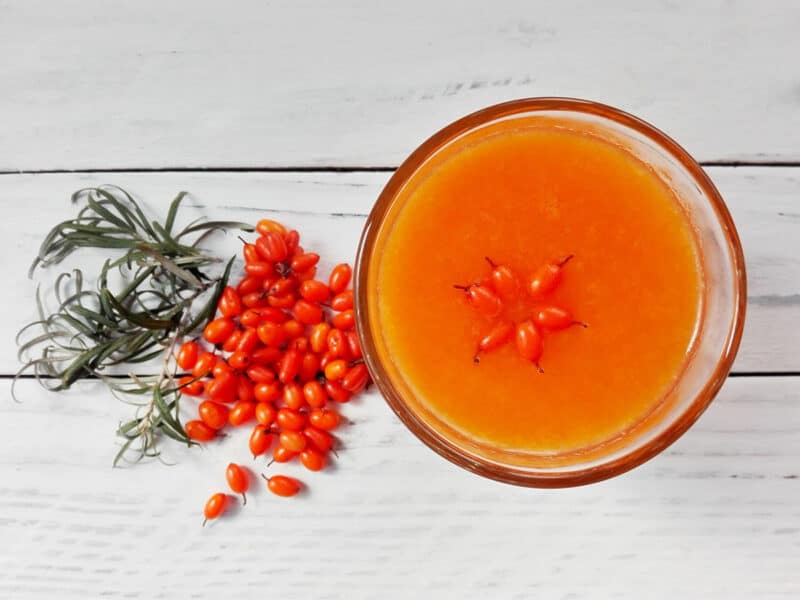
It takes several years for sea berries to produce their first fruits. The average is two to three years after planting. Some varieties produce as much as 30 to 50 pounds of fruit per shrub, but it takes several years to reach maximum production.
Harvesting seaberries is a little tricky because the plant has thorns, so it’s best to wear gloves and long-sleeves. The fruits start to ripen in the late summer and early fall. Watch for full, uniform color and firmness.
Once harvested, take care of the berries immediately to maintain freshness.
After washing seaberries, store them in the fridge for up to two weeks, or freeze the berries. Spread the berries in a single layer on a baking sheet and freeze for two to three hours before transferring to freezer bags.
Seaberries taste tart and acidic but sweeten well with the addition of sugar or honey. These berries taste great as jams, jellies, or juice, as well.


